| Period | State 1 | State 2 | State 3 | State 4+ | m | Expected | PV |
|---|---|---|---|---|---|---|---|
| 1 | 1.00 | 0.00 | 0.00 | 0.00 | $25 | $25.00 | $24.79 |
| 2 | 0.50 | 0.50 | 0.00 | 0.00 | $25 | $12.50 | $12.29 |
| 3 | 0.35 | 0.25 | 0.40 | 0.00 | $25 | $8.75 | $8.53 |
| 4 | 0.26 | 0.17 | 0.20 | 0.36 | $25 | $6.62 | $6.41 |
| 5 | 0.19 | 0.13 | 0.14 | 0.54 | $25 | $4.69 | $4.50 |
| 6 | 0.13 | 0.09 | 0.11 | 0.67 | $25 | $3.36 | $3.19 |
| 7 | 0.10 | 0.07 | 0.08 | 0.76 | $25 | $2.41 | $2.28 |
| 8 | 0.07 | 0.05 | 0.05 | 0.83 | $25 | $1.73 | $1.62 |
| 9 | 0.05 | 0.03 | 0.04 | 0.88 | $25 | $1.24 | $1.15 |
| 10 | 0.04 | 0.02 | 0.03 | 0.91 | $25 | $0.89 | $0.82 |
| 11 | 0.03 | 0.02 | 0.02 | 0.94 | $25 | $0.64 | $0.58 |
| 12 | 0.02 | 0.01 | 0.01 | 0.95 | $25 | $0.46 | $0.41 |
| Total | $66.58 |
CLV and Research Planning
Overview
Linking customer value to research objectives and designs.
Larry Vincent,
Professor of the Practice, Marketing
MKT 512
September 4, 2025

Ratios

Delta analysis

Hands-on
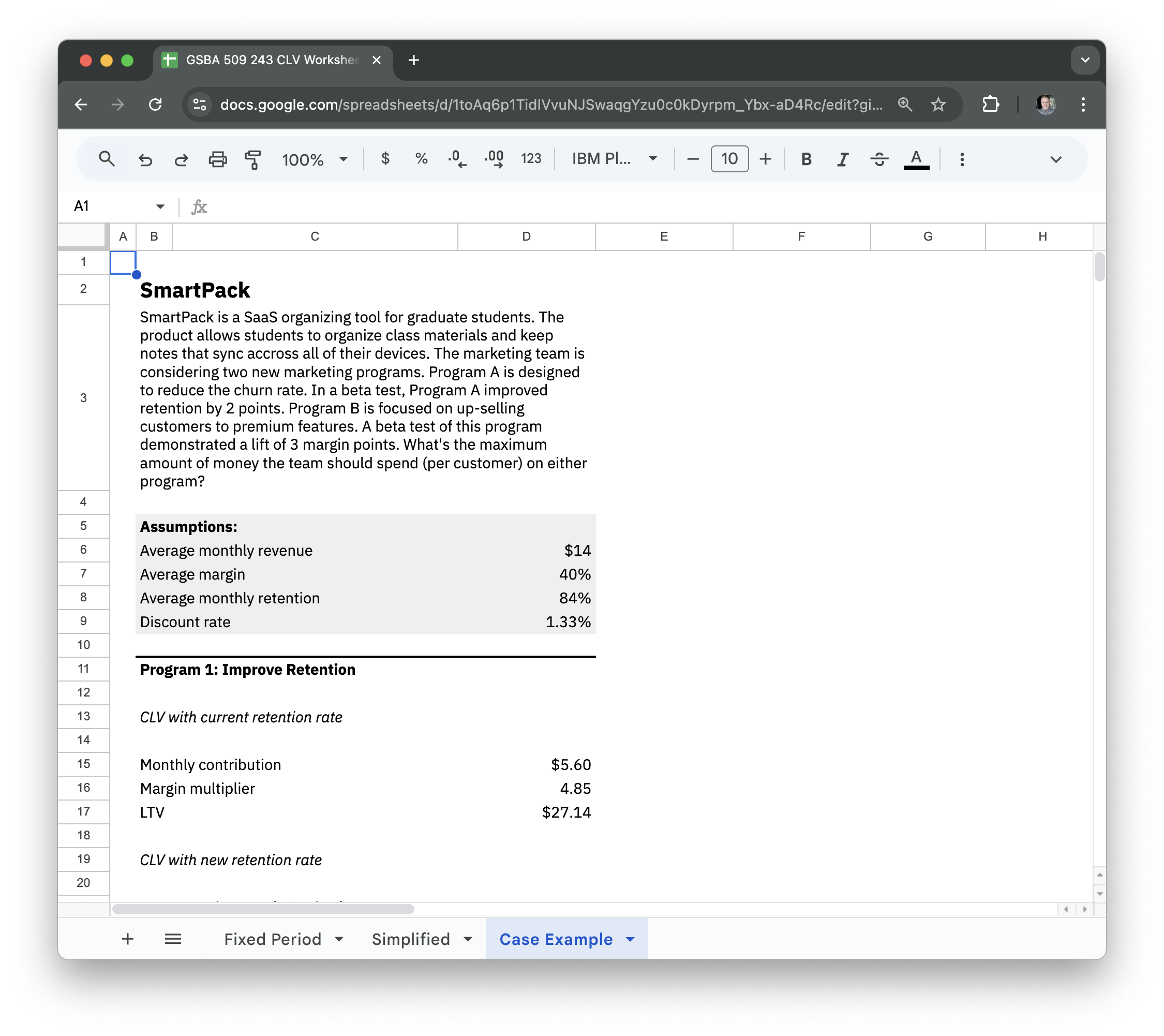
Delta analysis

Why do customers churn?
Churn Triggers
Voluntary
- Poor customer service
- Product quality issues
- Price increases or poor value perception
- Feature removal/product changes
- Billing/payment issues
- Competitive encroachment
- Onboarding failures
- Lack of innovation
- Communication failures
- Technical issues
Involuntary
- Geographic relocation
- Life stage changes (marriage, retirement, new job)
- Economic hardship/budget constraints
- Changes in needs/preferences
- Business closure (for B2B)
- Death/illness
- Consolidation of services elsewhere
- Seasonality
- Regulatory changes
- Technology shifts beyond your control
Different businesses and product scenarios have different natural churn characteristics.
So far, we’ve been discussing uniform churn risk.

But in some business contexts the risk of churn is not linear
When churn risk changes over time, we turn to survival analysis techniques.
Survival analysis translation
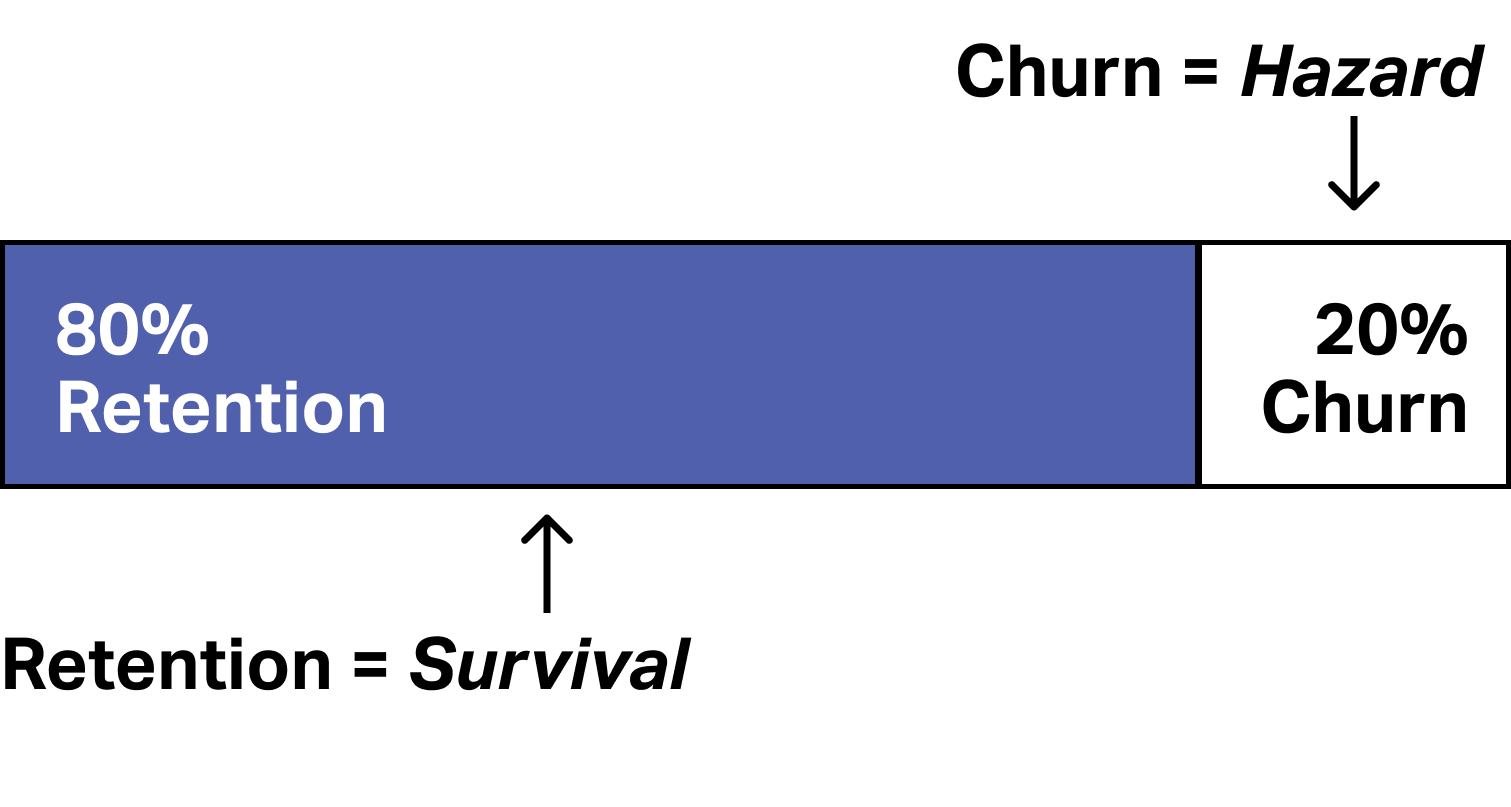
A real-world example

Survival rates

Calculating survival
Had we estimated with constant rate based on those who actually reached age 90, we would have grossly over-estimated premature death.

Weibull Distribution
A statistical tool used to model time-to-event data (like customer churn)–the Weibull distribution allows us to capture varying behaviors over time.
Weibull Hazard Function
\[\Huge h(t) = \lambda k t^{k-1} \]
\[ t = \text{time to churn}\\ \lambda = \text{a scale parameter}\\ k = \text{a shape parameter} \]
Shape matters

When k > 1,
time is not
on your side
When should you expect k > 1?
- Tech products involving rapid innovation
- Subscription boxes
- Mobile apps with limited content
- Businesses with deteriorating service models
- Freemium models with aggressive monetization
- High wear/tear products
- Online streaming services
When k < 1, required effort, lock-in, and opportunity costs are on your side
When should you expect k < 1?
- Banking and financial services
- Insurance
- Utilities
- Subscription services with learning curves
- Loyalty programs
- Businesses with high setup costs
- Community or network-driven platforms
When k = 1,
time does not significantly increase/decrease churn risk
Estimating CLV with Weibull distributions
- More complex than spreadsheet analysis or simple, continuing formulas
- Requires survival analysis, available on most statistical platforms (
survivalin R,lifelinesin Python) - Model resembles regression predictors and coefficients
- After training a model, one can estimate CLV by customer based on predicted retention (survival) rates
Limitations
- Survival analysis can be complex compared to other predictive models
- Requires a lot of data
- Ignores covariates that might affect churn
- Monotonic when actual customer behavior might not be
- Censoring is a significant issue
Censoring

If there are no contracts, how do you know when a customer churns?
Retention basics

Simple Retention
- Finite life. Assumption: When customers leave, they don’t return.
- Common in B2B and subscription-
based businesses

Migration
- Customers migrate in and out
- Common in retail, CPG, and any
business where customers can
seek variety
Markov Chain math

Migration model
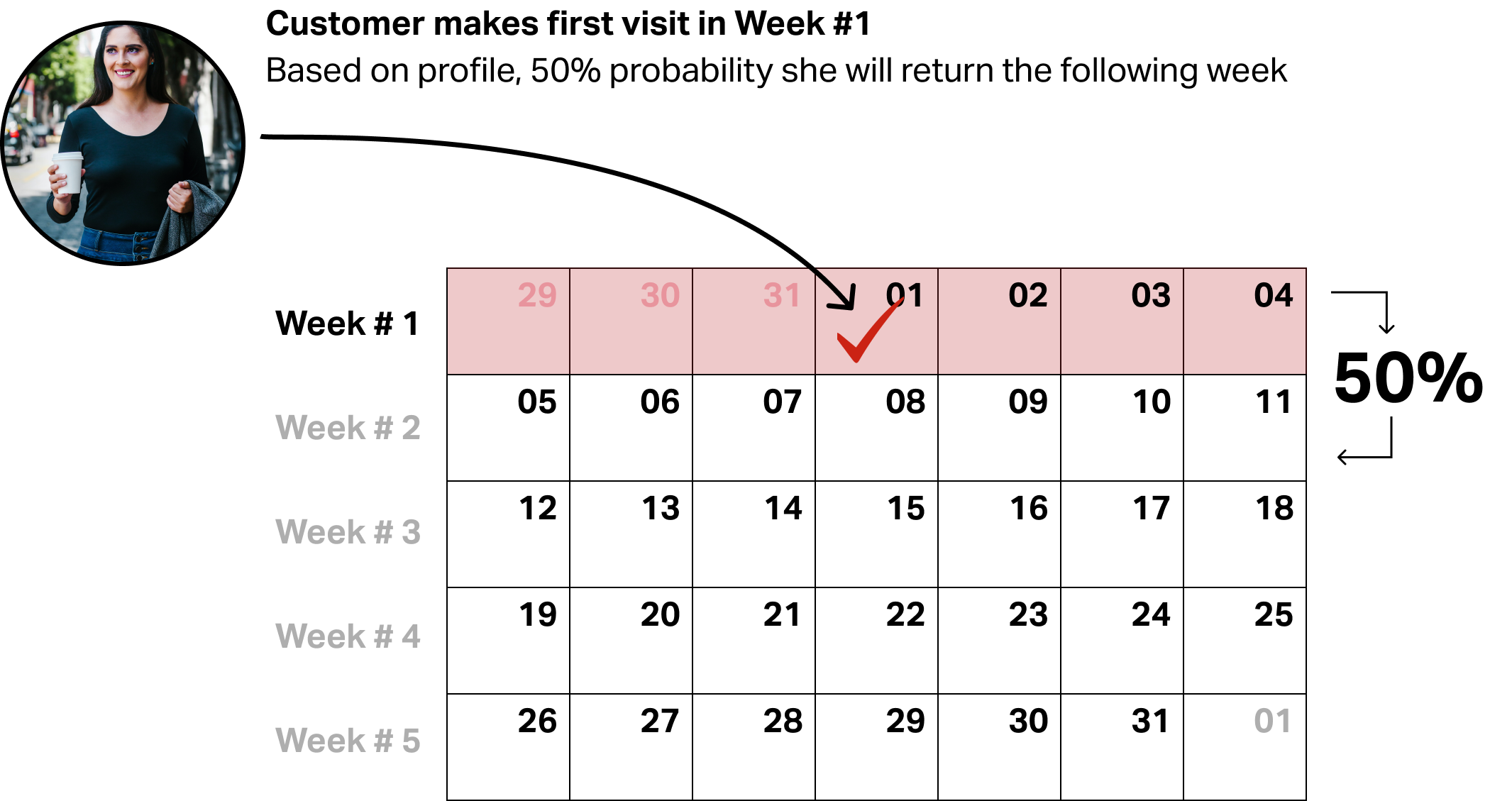
Migration model
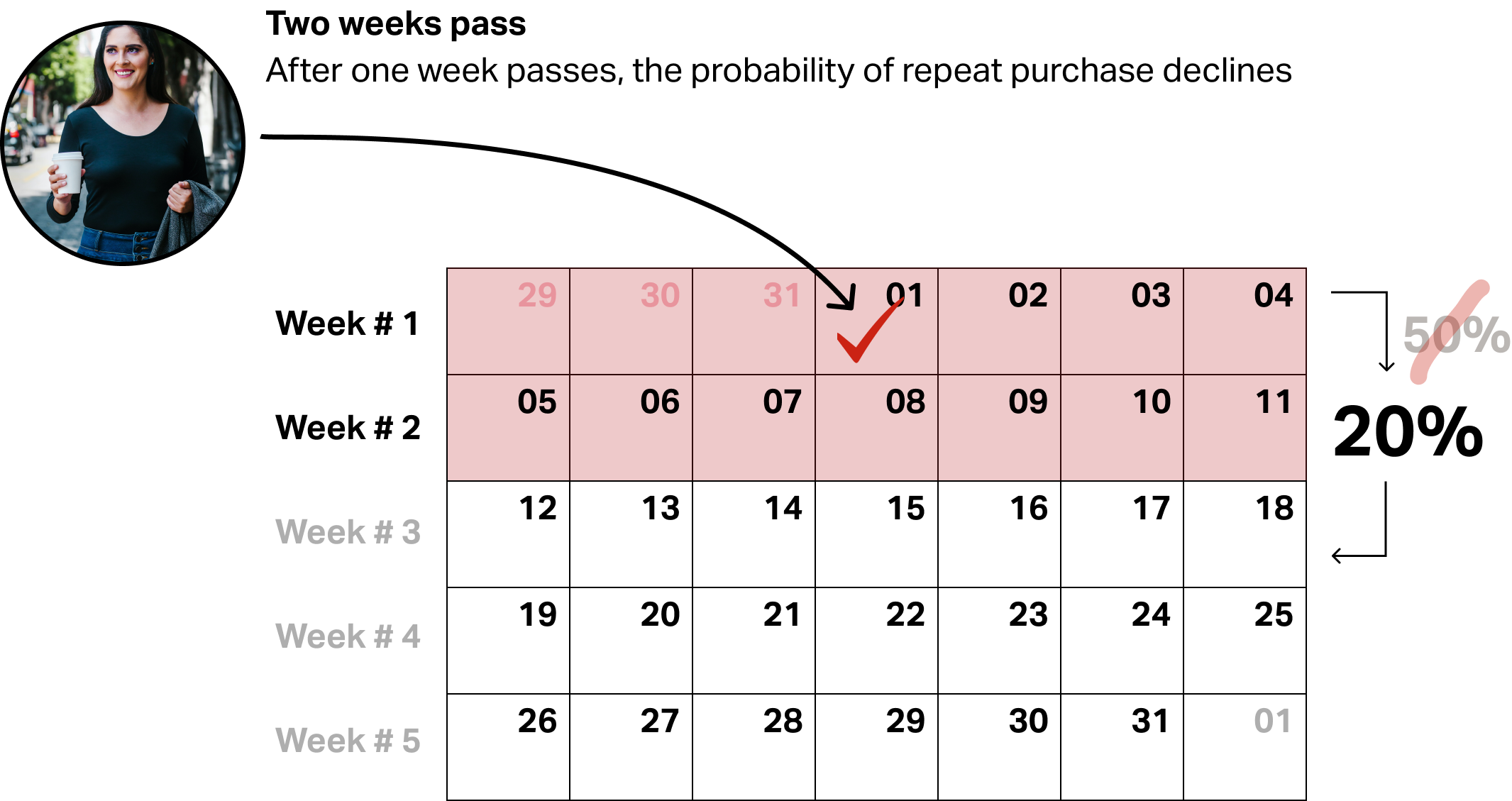
Migration model
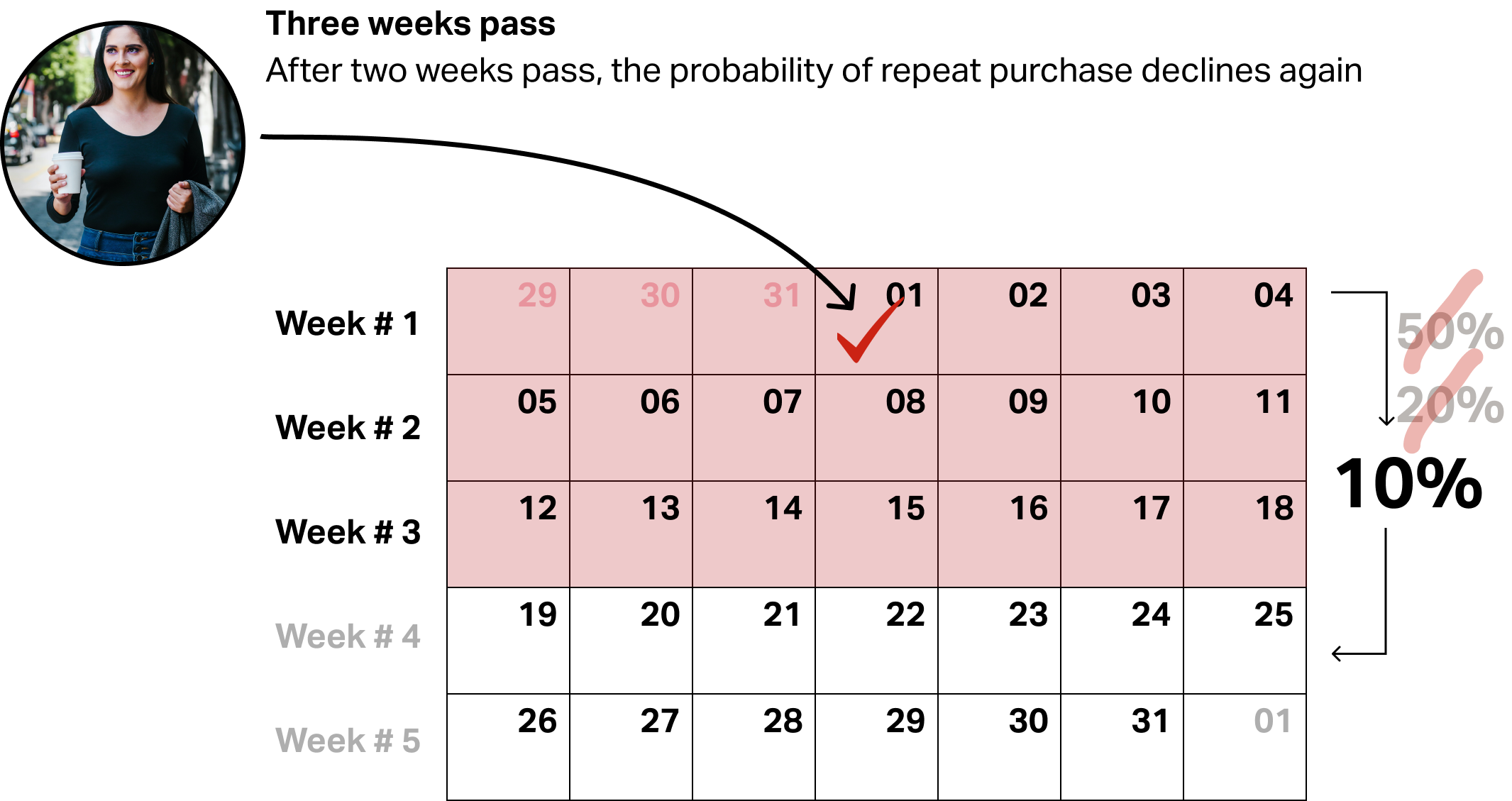
Migration model
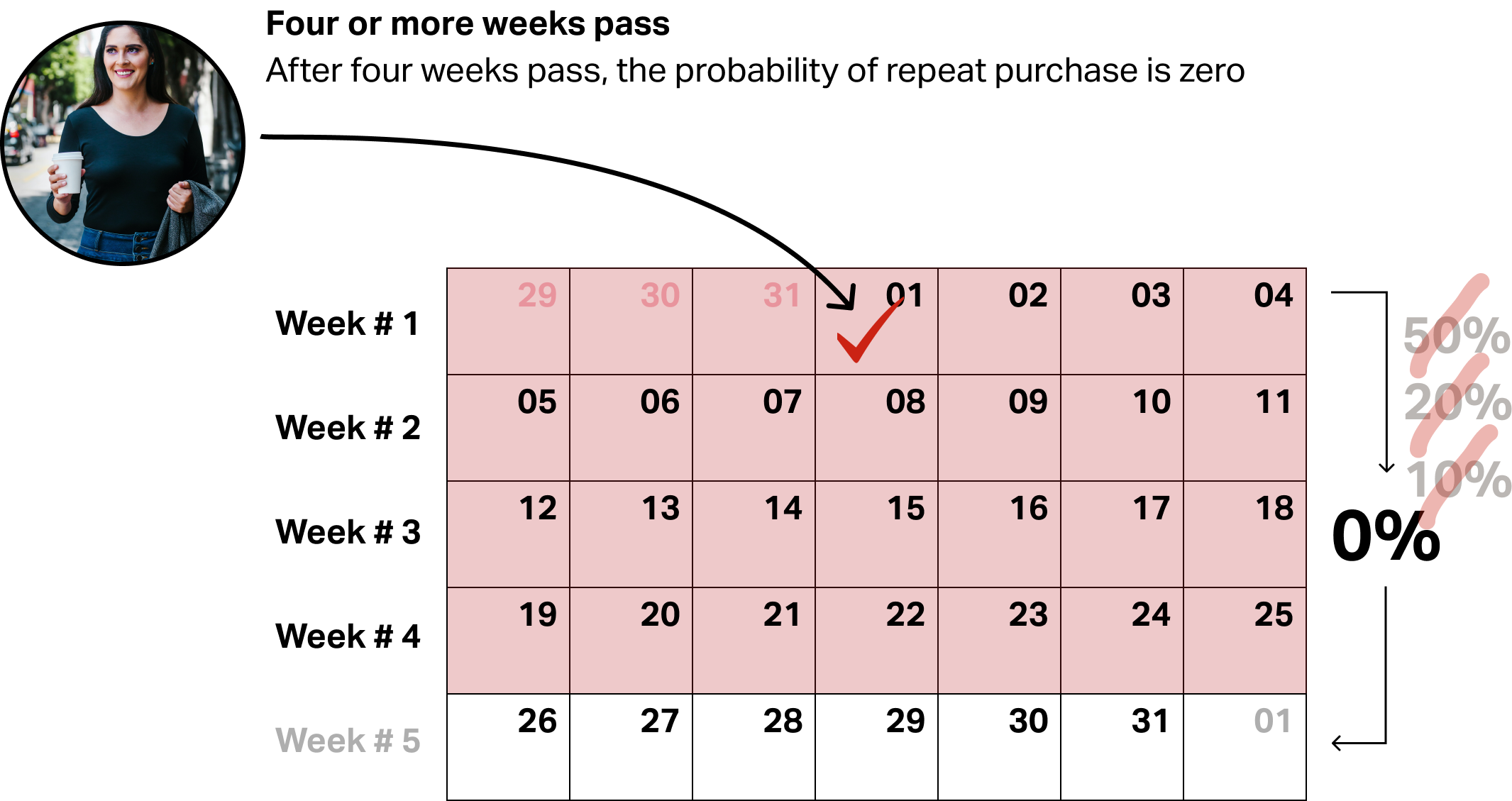
Migration model
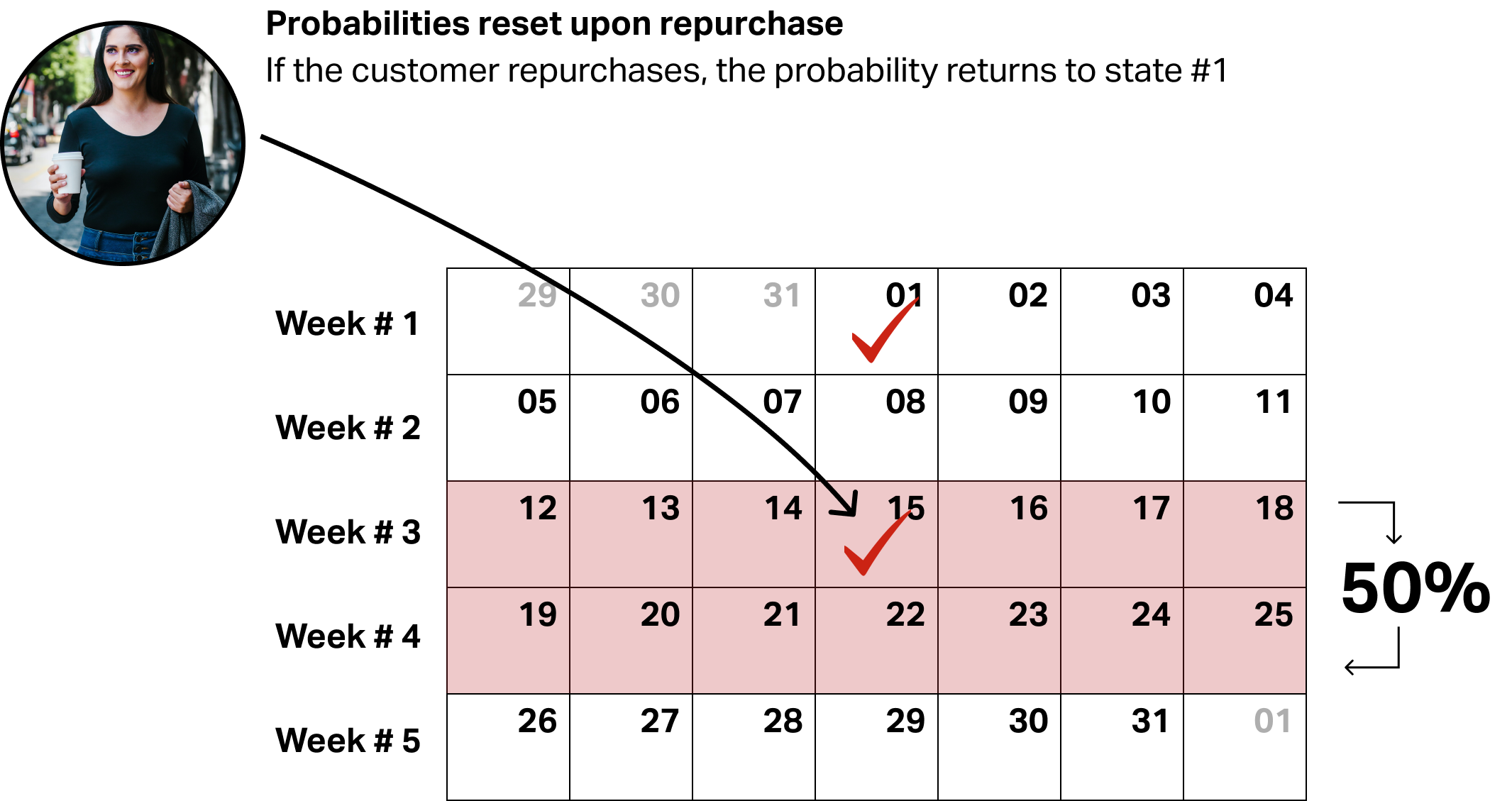
Probabilities & LTV
Limitations
- This is only one approach; states need not be based on recency
- Can become very complex, particularly as number of states increases
- Memorylessness–customer behavior is often influenced by an entire customer history
- Can require a substantial amount of data to build a reliable model
- Lack of causality–based solely on probabilities of transitional states without any understanding of the reasons behind transitions
What does conventional CLV miss?

Doing-saying gap
It is possible and common for some customers
to generate more referral value than they do actual CLV.
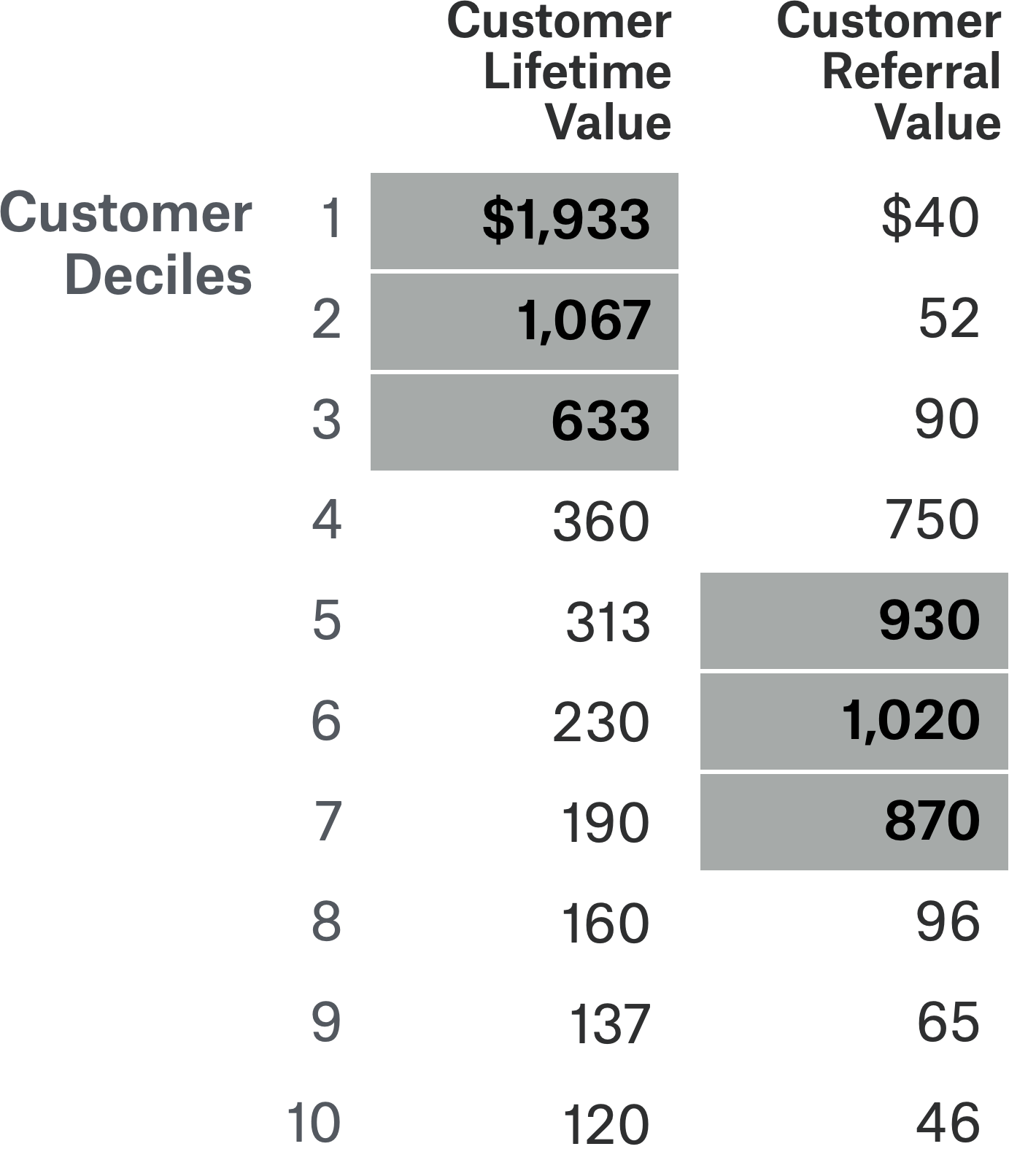
Designing research programs.
In experimental designs, a dependent variable is required
The Metrics that Marketers Muddle
- Market Share
- Likability
- CLV
- ROI
- NPS
NPS
We discovered that when, where, why, and to whom consumers praised or criticized a brand was fluid and … independent of their NPS ratings
Source: “Where Net Promoter Score Goes Wrong” in Harvard Business Review, 2019
Questions you should also ask
- Have you recommended this brand?
- Have you discouraged anyone from choosing this brand?
- Why?
Prediction vs. reality


Source: “Where Net Promoter Score Goes Wrong” in Harvard Business Review, 2019
Designing Research Programs
Four eseential components of a research plan.
- Objectives & Research question(s)
Define specific decision(s) you need to make and what you need to learn to inform that decision. - Methodology
Select the research approach (surveys, interviews, experiments, observation) that best matches your objective and the type of data you need. Match qualitative methods to exploratory questions and quantitative methods to confirmatory hypotheses. - Sampling Frame/Plan
Specify exactly who you will study, how you will access them, and what potential biases this might introduce. Ensure your sample can actually answer your research question and represents the population you care about. - Analysis Plan
Decide before collecting data how you will recognize meaningful findings. Define what success looks like and what you need to rule out.
Types of Research
